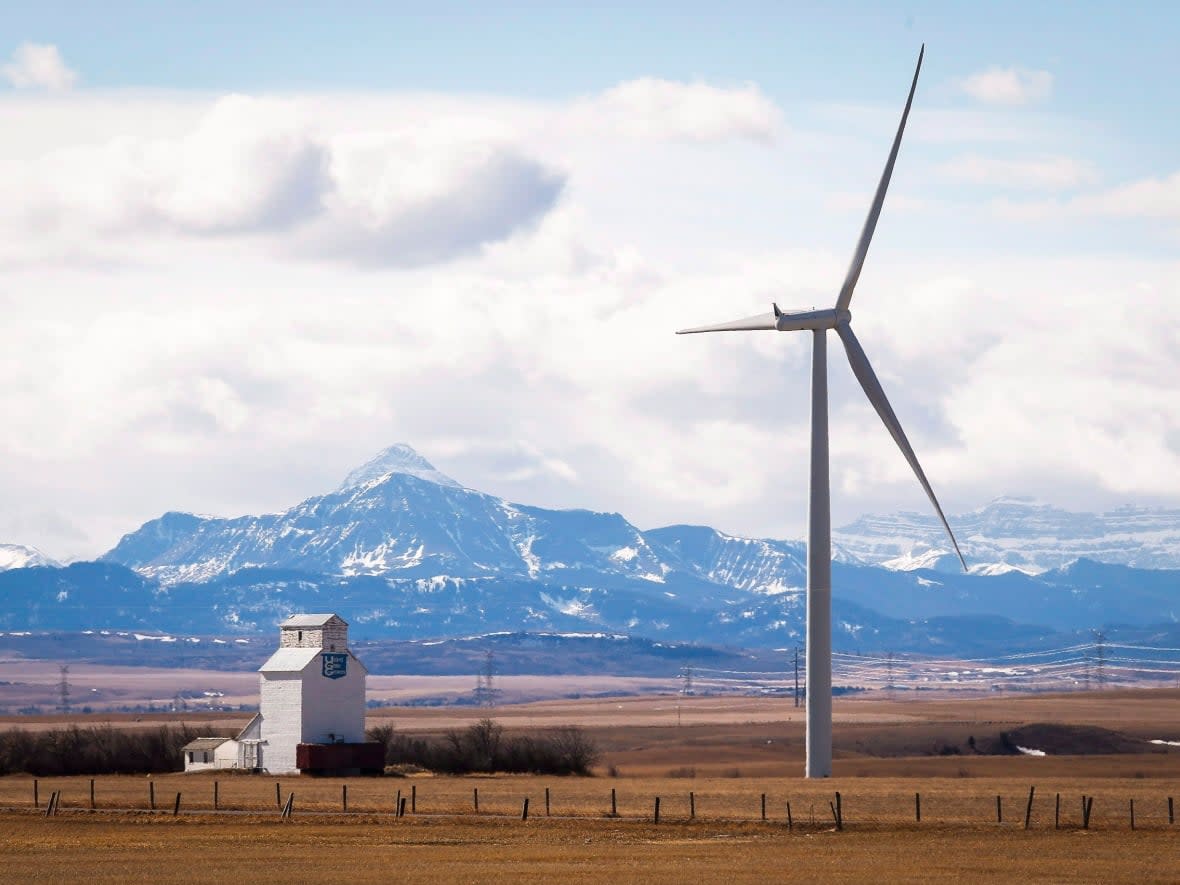Alberta premier pitches more gas-fired power plants as UN climate panel calls for phaseout

Premier Danielle Smith says renewable energy is unreliable and that Alberta should build additional gas-fired power plants for a more predictable source of electricity.
"This is a natural gas basin," Smith told delegates at the Rural Municipalities of Alberta (RMA) convention in Edmonton on Wednesday. "We are a natural gas province. And we will continue to build natural gas power plants, because that is what makes sense in Alberta."
In response to questions from rural councillors, Smith also said she's looking at ways to ensure solar and wind companies set aside money to reclaim land in the future for when a renewable installation is dismantled.
"I think that it needs to be addressed at the start, or we're going to have the same problem that we had with the orphan wells, and why would we want to bring that to the province of Alberta?" said Red Deer County Mayor Jim Wood.
Smith said she met with power providers and learned the province's electricity grid twice came close to needing more power than it could supply in the last few months.
She pointed to stagnant air and solar panels covered with snow and ice leading to a dearth of wind and solar generation at those times.
The emissions from natural gas plants can be captured and sequestered to meet climate targets, she said.
Smith's promotion of more natural gas-fired power plants comes days after the United Nations' Intergovernmental Panel on Climate Change said wealthy countries should phase out gas plants by 2035 to prevent irreversible damage to the planet.
The premier said it concerns her to see solar panels and wind farms installed on arable land.
Kara Westerlund, vice-president of RMA, says rural councils share that concern. She told reporters the installations should be going onto brownfields rather than "taking some of the best growing soils and agricultural land out of production."
She sees renewable energy sources as complementary to oil and gas.
"We've never felt that one is going to replace the other," Westerlund said.
Renewables a cheap source of energy, researcher says
RMA members previously voted for a resolution calling on the province to require renewable companies to pay for a bond that would cover the costs of removing solar panels or wind turbines past their useful lives.
The province already has a regulation from 2018 that stipulates how the sites are to be decommissioned.
Smith said she's considering requiring renewable companies to set aside a proportion of revenue to save for site cleanup costs — and that the remediation money should transfer to any new site owners.
However, devising a solution for unreclaimed oil and gas sites is Smith's priority.
"Once people feel comfortable that we've got the right model there, then the next obvious question is, what are we going to do about solar and wind?" she said.
According to the Alberta Energy Regulator, there are nearly 200,000 inactive or abandoned wells in the province.

Binnu Jeyakumar, director of electricity at the Pembina Institute, said inactive oil wells and renewable sites aren't the same.
"We get orphan wells because we run out of viable gas production in these locations," she said. "You don't run out of wind or solar in a location."
When equipment breaks down, it may be viable for an owner to install new turbines or panels, she said.
Jeyakumar also challenged the premier's assertion that solar and wind are unreliable sources of electricity. She said hours of sunlight and weather are predictable: an electrical system operator can plan for those fluctuations by using diverse sources of energy, and by building more storage, transmission and distribution systems.
Most solar panel systems are built so snow and ice slide off or melt, she said.
She said building a new gas plant is a risky commitment in a world where energy prices fluctuate wildly and the power plant is likely to be around for another 30-to-40 years. She said there are sound reasons why investors are turning to renewables.
"I'm not saying we should only build solar," she said. "But we should be basing our grid on solar and wind, because they are the cheapest options."


